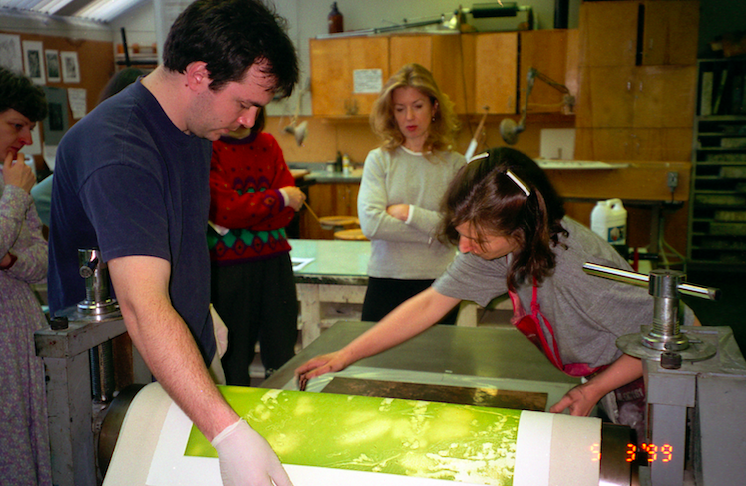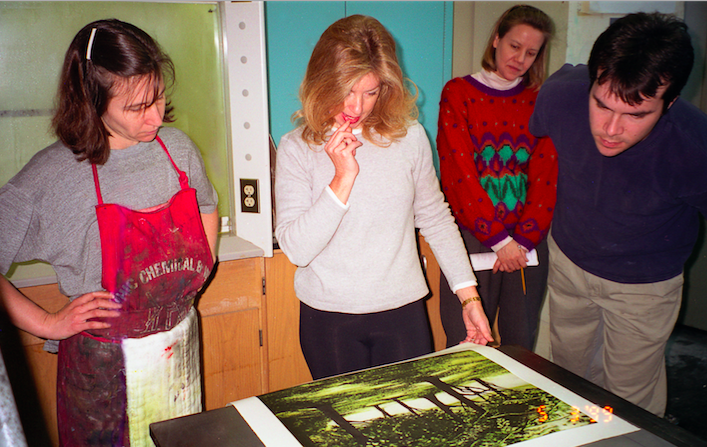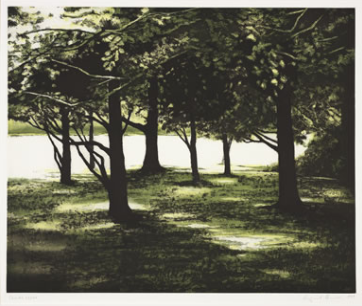

April Gornik
Julia D’Amario, printer
1998-1999
Workshop: March 2-3, 1999
April Gornik received a BFA from the Nova Scotia College of Art and Design, Nova Scotia, Canada, in 1976. She is represented in many major museums including the Metropolitan Museum of Art, the Whitney Museum of American Art, the Museum of Modern Art; the National Museum of American Art, and the National Museum of Women in the Arts. She has had several major solo exhibitions.
During the 1980s Gornik emerged as a leading painter in New York, along with other artists working in what was dubbed the “New Romantic” style. Inspired by the Luminist painters of the late nineteenth century, Gornik’s bucolic yet often dramatic images are soft-focused depictions of unpopulated landscapes that sparkle with texture and light. Using a subdued color palette, Gornik seeks to capture the sensual essence of her subject, creating images that are at once inviting and vaguely threatening, combining the contradictory qualities of the sublime.
Using a digital print of one of her paintings as a guide, Gornik and printer Julia D’Amario, with whom she had worked previously at Pace Editions, created a large three-color etching using a white-ground resist and spitbite etching that fully captured Gornik’s atmospheric painting style.
April Gornik. American, 1953 –

White-ground and soft-ground etching and aquatint printed in
sequence of
yellow, green and
black on Hahnemuhle copperplate
warm white paper
Sheet: 23 x 26 1/4 in.;
image: 18 x 22 in.